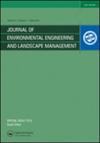重金属的原位和非原位生物修复:目前的情况
IF 1.1
4区 环境科学与生态学
Q4 ENVIRONMENTAL SCIENCES
Journal of Environmental Engineering and Landscape Management
Pub Date : 2021-12-16
DOI:10.3846/jeelm.2021.15447
引用次数: 4
摘要
在过去几十年中,人口增长加快、工业化、城市化和危险的工业做法导致了环境污染的发展。重金属是基于其毒性而与环境和公众健康问题有关的污染物之一。根据污染物的类型和浓度、场地的特点,可以通过“非原位”和“原位”工艺实现有效的生物修复,但不限于成本。人工神经网络和微生物基因编辑的最新进展有助于改善污染场地重金属的“原位”生物修复。采用多种组学方法,通过各种本土微生物有效去除重金属。这篇综述反思了两种主要的生物修复技术,它们的原理、局限性和优势,以及纳米生物技术、计算生物学和DNA技术的新方面,以改进场景。本文章由计算机程序翻译,如有差异,请以英文原文为准。
IN SITU AND EX SITU BIOREMEDIATION OF HEAVY METALS: THE PRESENT SCENARIO
Enhanced population growth, rapid industrialization, urbanization and hazardous industrial practices have resulted in the development of environmental pollution in the past few decades. Heavy metals are one of those pollutants that are related to environmental and public health concerns based on their toxicity. Effective bioremediation may be accomplished through “ex situ” and “in situ” processes, based on the type and concentration of pollutants, characteristics of the site but is not limited to cost. The recent developments in artificial neural network and microbial gene editing help to improve “in situ” bioremediation of heavy metals from the polluted sites. Multi-omics approaches are adopted for the effective removal of heavy metals by various indigenous microbes. This overview introspects two major bioremediation techniques, their principles, limitations and advantages, and the new aspects of nanobiotechnology, computational biology and DNA technology to improve the scenario.
求助全文
通过发布文献求助,成功后即可免费获取论文全文。
去求助
来源期刊
CiteScore
1.90
自引率
7.70%
发文量
41
审稿时长
>12 weeks
期刊介绍:
The Journal of Environmental Engineering and Landscape Management publishes original research about the environment with emphasis on sustainability.

 求助内容:
求助内容: 应助结果提醒方式:
应助结果提醒方式:


